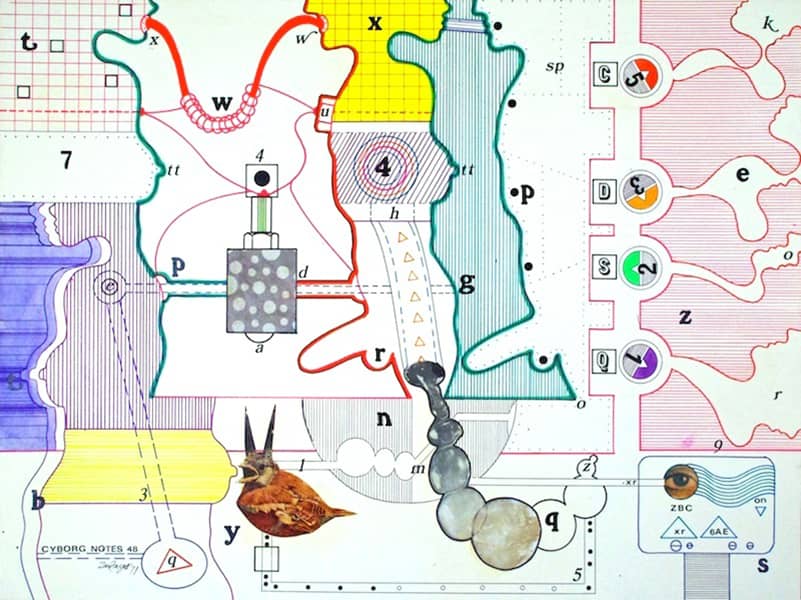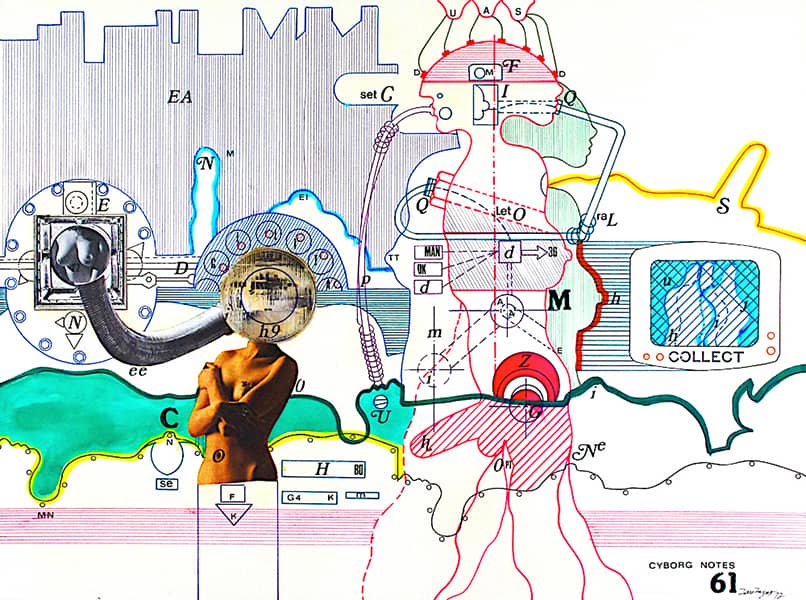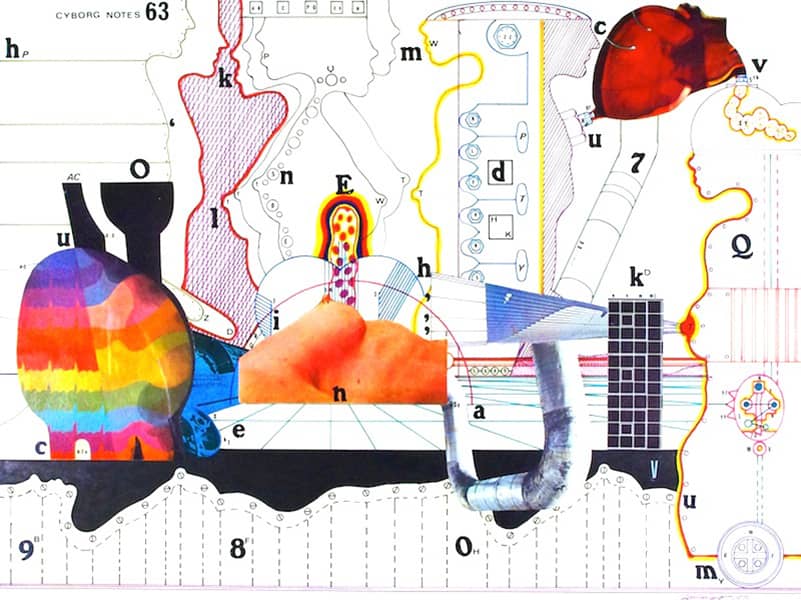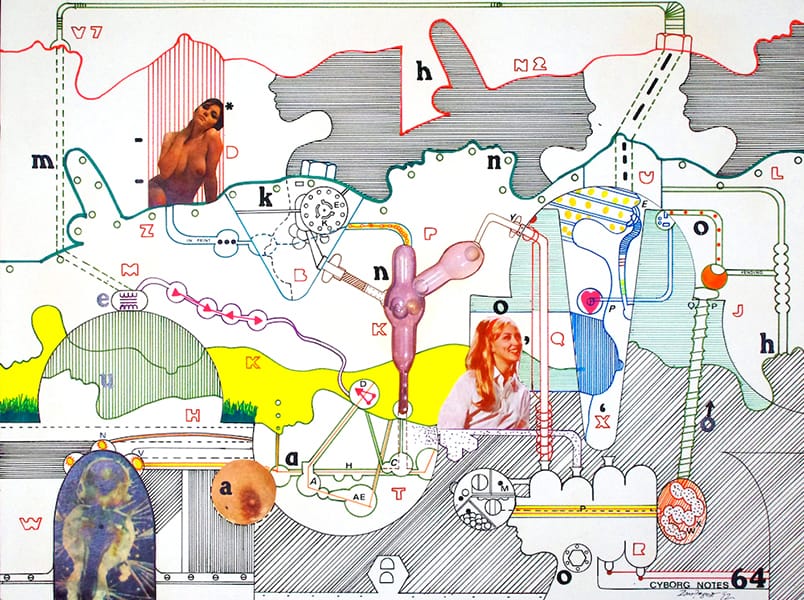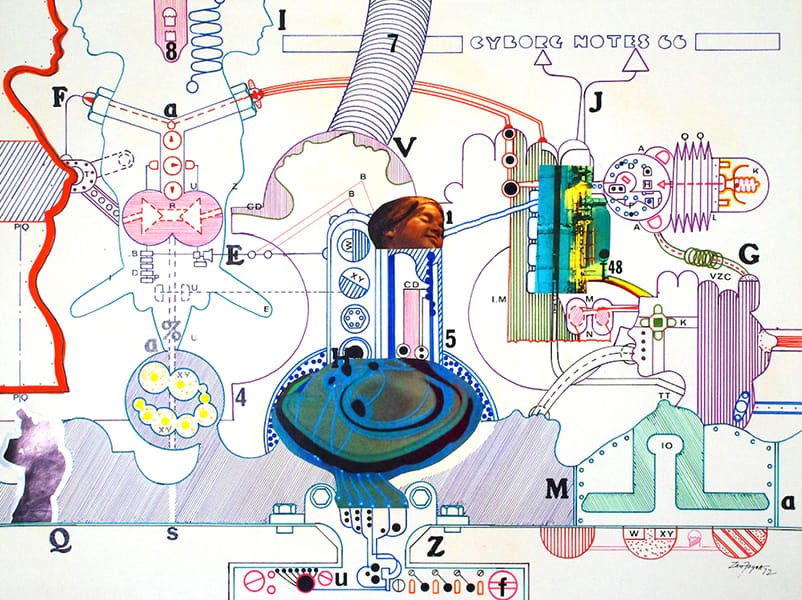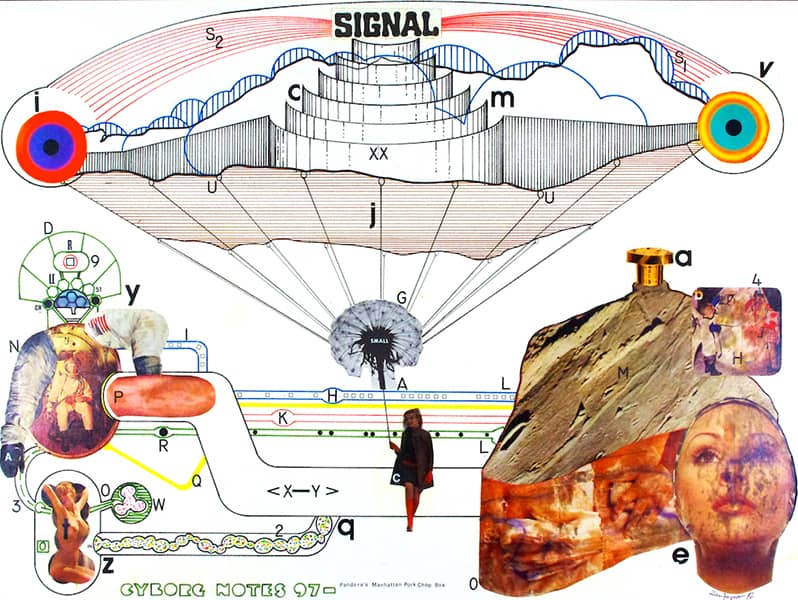Don ZanFagna
Bio Synopsis
Don ZanFagna might be the most famous visionary artist you never heard of — despite more than 215 solo and group exhibitions across the United States and internationally. Buckminster Fuller admired him as “a great visionary, artist, and architect.” He was 60 years ahead of his time in predicting the impact of technology on the environment. This idiosyncratic genius was eerily prescient of current environmental realities — embodied in collages that are a dynamic amalgam of surrealism, futurism, and psychedelic Pop. A Rhode Island native, ZanFagna held advanced degrees in painting, art, and architecture from the University of Michigan and the University Southern California. In 1956-57 he earned a Fulbright to study in Italy. A genius ahead of his time, in 1959 he created the first mobile communications system — not even talked about until the 1980s. In the 1960s he moved to New York and taught and eventually chaired the art department at Rutgers University and Pratt Institute. In 1967–68 he founded his architectural practice, Infra/Ultra, which was based on a “very specific understanding of selected aspects of science, art, and nature; that invisible patterns are rapidly presenting us with a range and depth of information that makes it essential for our future and which is leading us to deeper and newer understanding of NATURE and ourselves. Indeed, yesterday’s ‘magic’ is today’s science.”
Curator’s Statement
The Cyborg Series (1968–74) integrates creativity with futuristic warnings. These collages serve as “cybernetic metaphors” that focus on the future problems that DNA mixing might cause. They are signals or warnings of things about to wrong. The artist wrote, “These works incorporate humans and machines, cloning, eco-architecture and landscape, biology and technology and make use of dark humor, skepticism, irony, and futuristic symbolism.” His environments expressed in collage reveal entities that have lost their humanity and sexuality, but mechanically still reproduce new “humans” replete with nuts, bolts, and robotic controls. These collages have traveled from 2010–12 to the Aspen Art Museum, the Tampa Museum of Art, and the Halsey Institute of Contemporary Art at the College of Charleston School of the Arts.
– Peter Hastings Falk
Read the full backstory about ZanFagna here.

